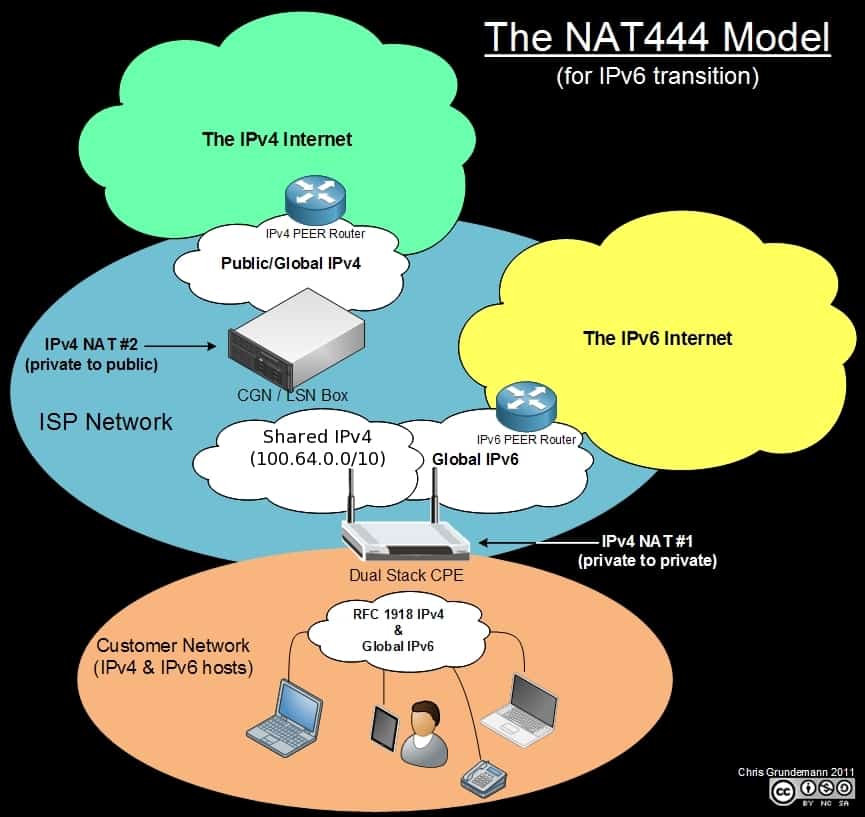At long last, there is a shared transition space available for all who need it: 100.64.0.0/10
The whois comments provide a brief explanation of this new block:
This block is used as Shared Address Space. […]
Shared Address Space can only be used in Service Provider networks or on routing equipment that is able to do address translation across router the interfaces when addresses are identical on two different interfaces
This block was assigned by the IETF in the Best Current Practice document, RFC-weil-shared-transition-space-request-15 which can be found at: http://datatracker.ietf.org/doc/draft-weil-shared-transition-space-request/
Shared transition space is meant to be used primarily in the middle layer of a service provider’s NAT444 deployment. In the illustration below, the green ‘IPv4 Internet’ uses globally unique “public” IPv4 addresses, the orange-ish ‘Customer Network’ on the bottom uses RFC1918 “private” IPv4 addresses, and the blue ‘ISP Network’ in the middle is where these new, shared transition (100.64.0.0/10), IPv4 addresses should be used. Global IPv6 addresses should be used throughout.
For more information on the history and on the need and use-cases for this shared transition space, see draft-bdgks:
Abstract
This memo discusses the applicability of a Shared Transition Space, an IPv4 prefix designated for local use within service provider networks during the period of IPv6 transition. This address space has been proposed at various times in the IETF, and more recently come to consensus within the ARIN policy development community where it was recommended for adoption as Draft Policy 2011-5.
To all who fought the good fight and prevailed: Kudos and Congratulations! Although it did not come easy, the Internet will now be allowed to run a bit smoother through this protocol transition (even if I do say so myself).







Did anyone else’s brain fall over the mush of words that was “Shared Address Space can only be used in Service Provider networks or on routing equipment that is able to do address translation across router the interfaces when addresses are identical on two different interfaces”??
[…] https://chrisgrundemann.com/index.php/2012/100640010/ […]
[…] https://chrisgrundemann.com/index.php/2012/100640010/ […]